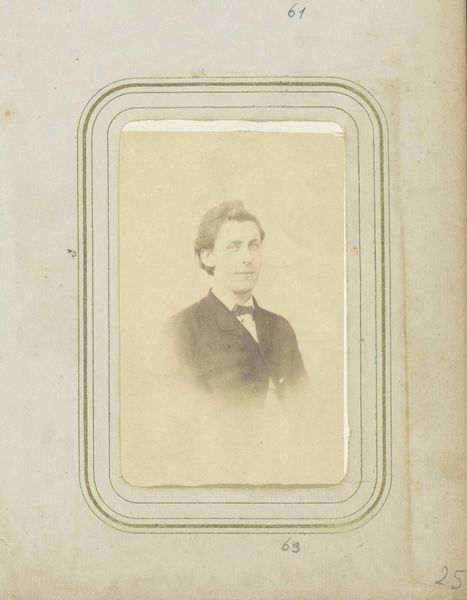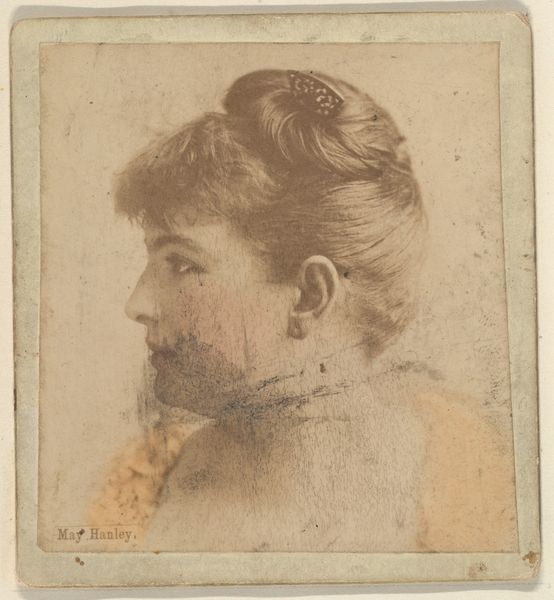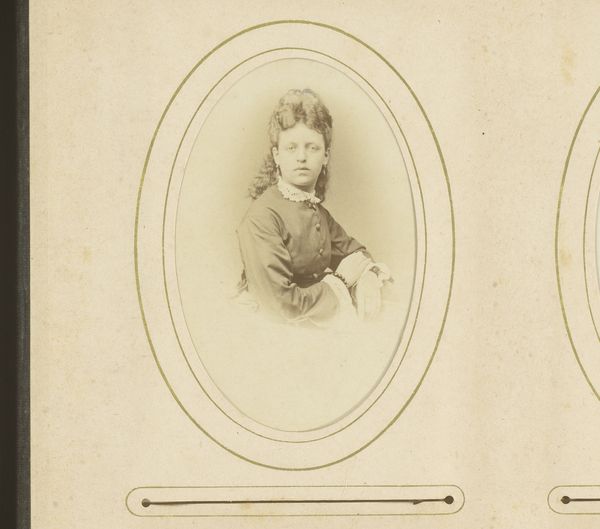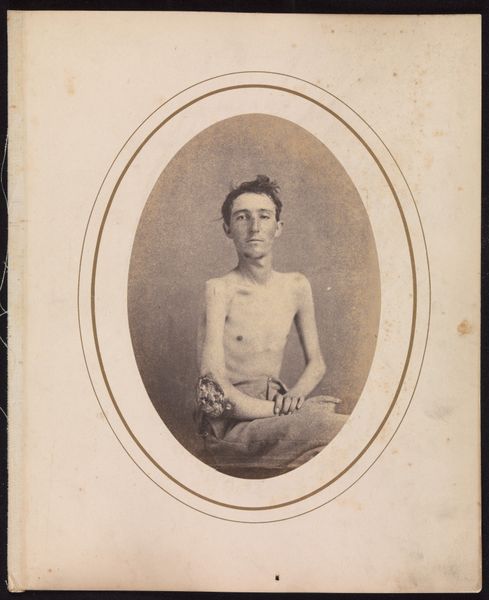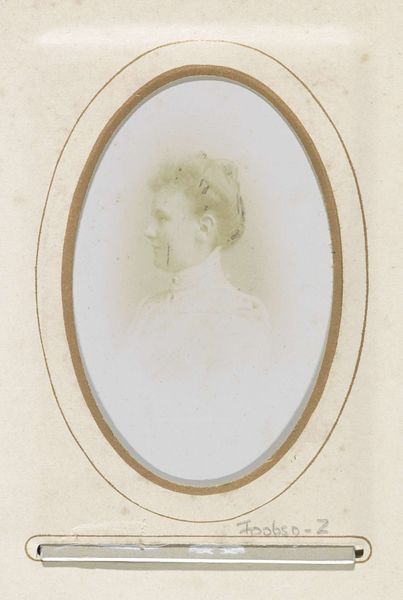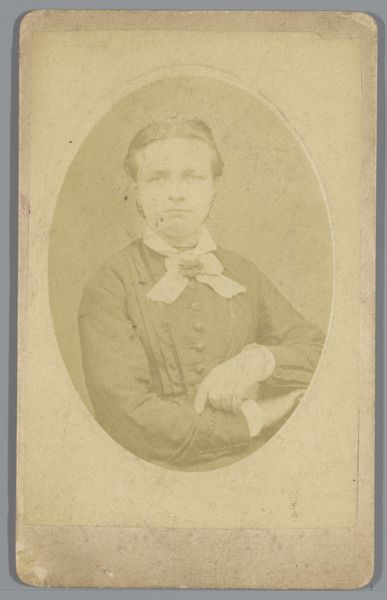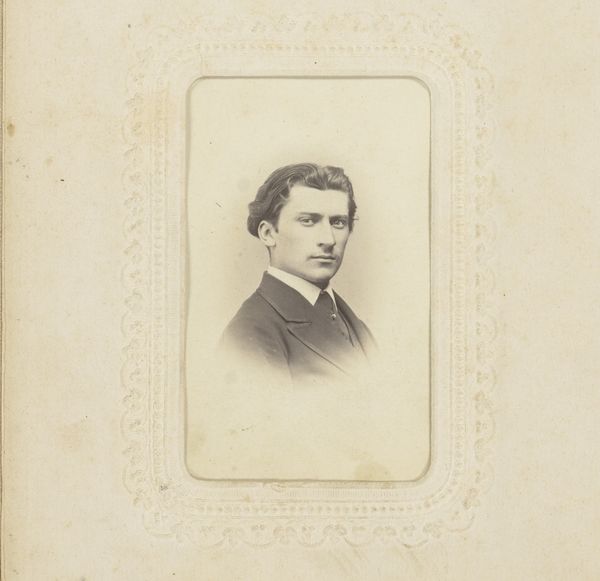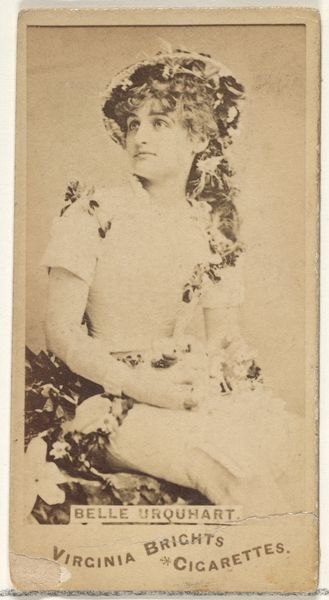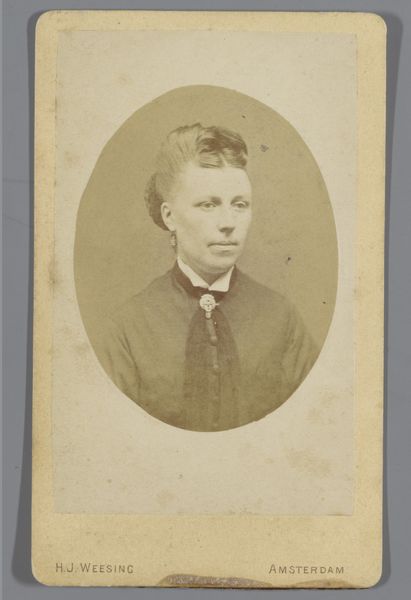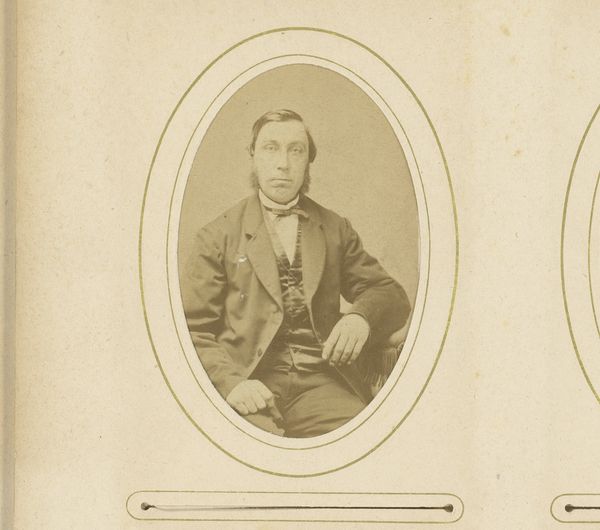
photography, albumen-print
#
portrait
#
photography
#
albumen-print
#
realism
Copyright: Public Domain
Editor: So, here we have "Frederick A. Bentley," a haunting albumen print photograph taken in 1865 by Reed Brockway Bontecou, currently residing at The Met. The immediate thing that strikes me is its stark realism and that wound... it’s undeniably jarring. What are your first impressions? Curator: Oh, my dear, jarring is putting it mildly. For me, this image whispers stories of battlefield medicine and a raw, visceral honesty. The vulnerability in his gaze is palpable, isn't it? To consider Bontecou's dedication to documenting such painful truths. He served as a surgeon in the Civil War, you know. This image becomes more than a portrait, it's a statement. A challenge. A quiet scream. Editor: It definitely adds layers knowing the photographer was a surgeon. Do you think the "realism" tag fully captures everything the photo is trying to show? Curator: Realism is a starting point, perhaps a safe harbor for the unprepared. But it’s reductive, isn’t it? Think about the light, the stark contrast, almost biblical. Doesn’t it elevate the image from mere observation to something almost… sacramental? Bontecou wasn't simply documenting a wound; he was showing resilience. The photograph has that effect doesn't it? I get goosebumps. Editor: I see what you mean. The setting becomes much more complex when considering themes of vulnerability, documentation, and survival that exist together, all because of the surgeon behind the camera. Curator: Exactly! Each viewer comes face-to-face with mortality and humanity and photographic truth. Do we run, or do we witness? Editor: Definitely gives a lot to think about; I'm leaving here with more than just the 'realism' of an albumen print from 1865. Curator: And that's precisely the point, isn't it? Art is not a looking glass but a portal, leading you to ask more of what you already thought you knew!
Comments
No comments
Be the first to comment and join the conversation on the ultimate creative platform.
